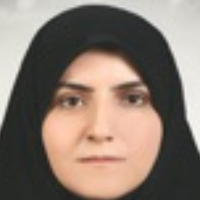Serpentinites of Gysian Silvana Ophiolites-South of Urmia petrography and geochemistry; relationship with Neo-Tethys subduction at the Northwest border of Iran
Author(s):
Article Type:
Research/Original Article (دارای رتبه معتبر)
Abstract:
Introduction
Some researchers supposed that investigating the formation of serpentineites can have important applications for understanding the large-scale geodynamics of that earth (Hattori and Guillot, 2003; Hilairet et al, 2007). Serpentineization occurs in a wide range of temperatures and pressures, low temperature serpentinite of alpine type ultramafic rocks occurs due to the penetration of atmospheric waters or from the infiltration of saline waters derived from sediments. This often refers to retrograde serpentineization. In contrast, progressive serpentineization occurs in many metamorphic processes during burial and warming of ultramafic rocks, which includes minimum water, during this process from the reaction of chrysotyl, antigorite and brucite, or antigorite reaction with brucite, forsterite + water were formed (Klein et al, 2014; Evans et al, 2013). The formation of anteatgorite may also occur from the reaction of chrysotyl/lyzardite with talc (Murzin et al, 2013; Lacinska et al, 2016).Materials and methods
After sampling and evaluation of microscopic sections, samples performed by X-ray micro-analyzer by Cansaran Binalood Company. With the aim of studying the whole rock geochemistry, 11 representative samples sent to the Zarazma Company of Tehran and ICP-MS analysis made for rare earth elements and transitional elements and XRF to obtain the major oxide elements.Results and discussion
The remaining olivines were ferro-hortonolite, spinels were chromite, clinopyroxenes were hedenbergite and orthopyroxenes left by serpentineization were ferrosilite. The geochemistry of these rocks is similar to the mantle wedge serpentinites studied along the Neo-Tethys. For example, with Voltri Massive serpentineites in the Italian Alps (Cannao, 2016) or with average subducted serpentinites (Deschamps et al, 2013). The serpentineization of these rocks start from the ocean floor, where the penetration of water in the fractures of the young oceanic crust and in hydrothermal veins, and spread with flat subduction in low temperature metamorphic facies. Since the main serpentine phase in them identified by XRD was chrysotyl, which is associated with the main mineral magnetite, so it is clear that their depth of subduction was low.Conclusion
The various microstructures identified in these rocks are mesh, sieve, augen, strip, hourly glass, etc. and the effects of elastic (microfolds and kinks) and brittle alteration. The growth of lyzardite plates in the margins of low crystallized mass nuclei is irregular and the increase of serpentine veins and strong deformation reduces the resistance of serpentinites to shear and stress. With precision on the contents, ratios and diagrams, Gysian serpentineites evaluated as subducted type. The content of FME in these rocks is very high and is a sign of re-fertility resulting from the interaction of rock/fluid during subduction stages, which distinguishes it well from other types. In the absence of antigorites in these rocks, the depth at which Gysian serpentineites created was less than 50km. According to the above, Gysian serpentineites are subducted type in the northwestern part of Iran. Along the main Neo-Tethys sutur in Iran, other subduction serpentinites have been reported in Iraq and northwestern Anatolia in Turkey and Gysian serpentinites could be assumed a part of it.Keywords:
ophiolite , serpentinite , Silvana , Gysian , Neo-Tethys
Language:
Persian
Published:
Journal of Earth Science Researches, Volume:13 Issue: 52, 2023
Pages:
75 to 98
https://magiran.com/p2559310
دانلود و مطالعه متن این مقاله با یکی از روشهای زیر امکان پذیر است:
اشتراک شخصی
با عضویت و پرداخت آنلاین حق اشتراک یکساله به مبلغ 1,390,000ريال میتوانید 70 عنوان مطلب دانلود کنید!
اشتراک سازمانی
به کتابخانه دانشگاه یا محل کار خود پیشنهاد کنید تا اشتراک سازمانی این پایگاه را برای دسترسی نامحدود همه کاربران به متن مطالب تهیه نمایند!
توجه!
- حق عضویت دریافتی صرف حمایت از نشریات عضو و نگهداری، تکمیل و توسعه مگیران میشود.
- پرداخت حق اشتراک و دانلود مقالات اجازه بازنشر آن در سایر رسانههای چاپی و دیجیتال را به کاربر نمیدهد.
In order to view content subscription is required
Personal subscription
Subscribe magiran.com for 70 € euros via PayPal and download 70 articles during a year.
Organization subscription
Please contact us to subscribe your university or library for unlimited access!



